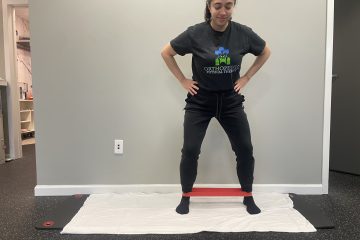“Looks like you’re 10 centimeters dilated. It’s time to start pushing! I want you to hold your breath and push as hard as you can for the next 10 seconds!”
If you’ve never had a baby, these are often the words you’ll hear from your medical providers when it’s time to birth your baby. Directed pushing, also called “purple pushing,” is when pregnant people are instructed to hold their breath, bear down, and push for approximately 10 seconds at a time.

Why has this technique been coined “purple pushing”? Because when you hold your breath and push like this, your face will often turn purple from the lack of oxygen and effort you’re giving. And if you push hard or long enough, little blood vessels in your face and eyes pop, leaving you with tiny bruises and blood shot eyes. The medicalized process of labor, as well as birth portrayed in the media, has taught many of us that this is the way to push.
Yet, very few people know that it’s actually not the best way to birth your baby. “Purple pushing” often takes more effort, is not as comfortable, and is not as effective for pushing out a baby.
So if directed pushing is not the best way to push out a baby, what is?
Let’s start with your birthing position(s):
For starters, we need to be in an optimal position for delivery. Lying on your back with knees out wide may be ideal for the provider delivering your baby, but it’s actually not very effective for the birthing person.
When it comes to labor and delivery, gravity can assist us in allowing the baby to descend down into the pelvis and out the vaginal canal. Positions that are often more ideal than the typical lithotomy position (on your back with knees bent up into chest) include:
- On hands and knees, especially with arms or upper body supported
- Low lunge
- Deep squat (can be assisted with partner holding from behind)
- Standing with one foot on a step or stool
- Side lying with head higher than pelvis
A lot of people worry that they cannot perform these positions with an epidural in, but with the right support and assistance, you absolutely can! Whether you get an epidural or not, you can use these positions early in labor to help ease contractions and open the pelvis up, or all the way into active labor, transition, and the pushing phase.
Should you be holding your breath when pushing?
From the pelvic PT perspective, there are better ways to push than holding your breath. And purple pushing can put unnecessary pressure on your pelvic floor.
A lot of medical providers are trained to have their patients push like this when delivering a baby, but it’s often not as effective and is more tiring for the birthing person. In fact, there is little evidence to support that directed pushing or “purple pushing” is more effective than other birthing techniques. Not to mention, pushing when there is not an urge or without the assistance of contractions puts more pressure on the pelvic floor and can lead to a host of problems postpartum.
The known side effects of “purple pushing” include:
- Increased risk of tearing
- Low maternal oxygen levels
- Low maternal blood pressure
- Exhaustion
- Increased risk of hemorrhoids and/or pelvic organ prolapse
- Increased likelihood of interventions (assisted delivery, episiotomies, c-section)
- Fetal distress (due to maternal changes in blood pressure and oxygen levels)
- Increased risk of blood vessels breaking in the face or eyes
- Increased risk of urinary or fecal incontinence postpartum
Instead, we should encourage “spontaneous pushing” or waiting for the fetal ejection reflex which tells us when to push. Whether you have an epidural or not, most people will feel a strong urge to push (almost like you can’t NOT push) and that is what guides us to start pushing.
NOTE: the fetal ejection reflex does not have a magical relationship to 10 cm of dilation. Some women will be ready to “start pushing” at 9cm, some at 11. If you get to 10cm of dilation and do not feel the fetal ejection reflex, ask your team to pause. Take an hour or two. Usually within the first hour that reflex will kick in, and you’ll soon meet your baby. But if you do not take that pause, and engage in purple pushing, the issues above become all the more likely for you and for baby.
From a pelvic floor perspective, the best thing you can do when pushing is keep your body as relaxed as possible and exhale through your mouth. When we exhale as we push, whether it’s during delivery or when you’re pooping, your pelvic floor muscles relax and lengthen to facilitate expelling baby (or stool). This allows your pelvic floor to work with your uterus in moving the baby down and out. If you’re holding your breath when pushing, this actually leads to a tightening and closing of the pelvic floor muscles which can work against the contractions of the uterus. This is like trying to push through a closed opening, and often will increase the amount of time spent pushing and potential injury to the muscles.
When it comes to optimizing birth, we should encourage more people to listen to their body, move during labor, and push when they feel ready. Instead of “purple pushing”, the best thing you can do for delivery, as well as your pelvic floor, is to relax and breathe! Feel your jaw and abdomen relax, push when you feel the urge, and exhale through your mouth. On average, this decreases total pushing time as well as risk of injury to the pelvic floor and lowers your chances of other interventions during delivery.
Curious to learn a little bit more about how pelvic health physical therapy can help you have a better pregnancy and birth experience? Schedule your FREE 10-minute consult call today ✨
Be empowered in education,
OrthoPelvic Physical Therapy


